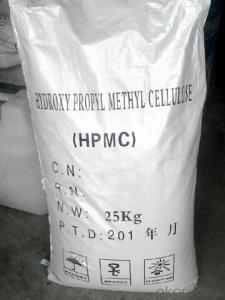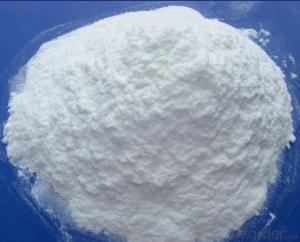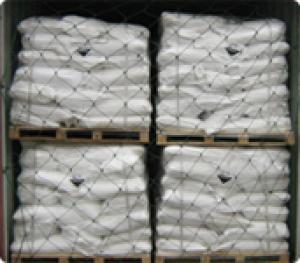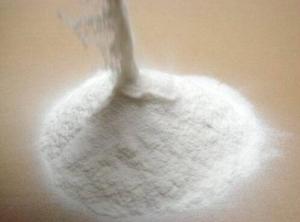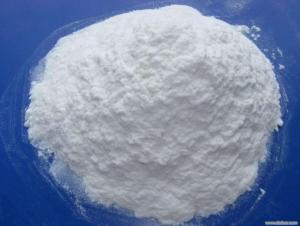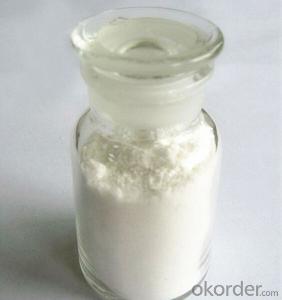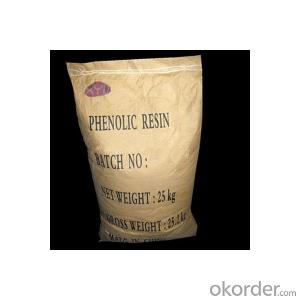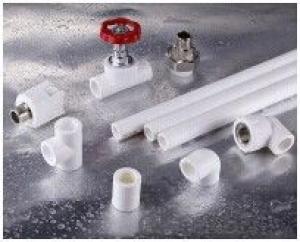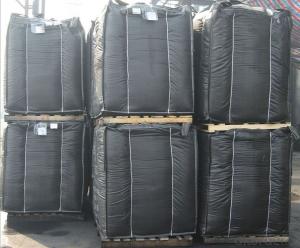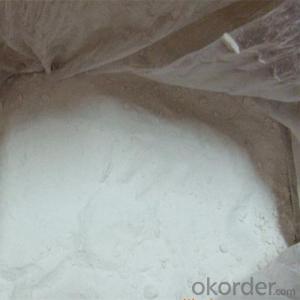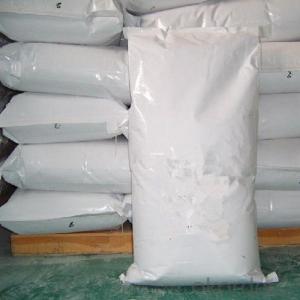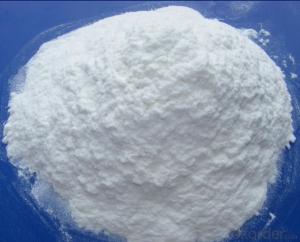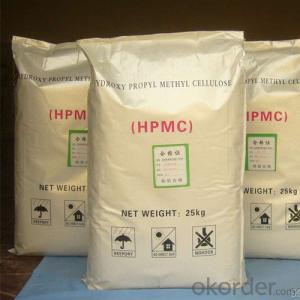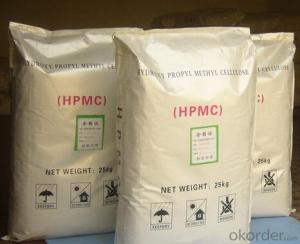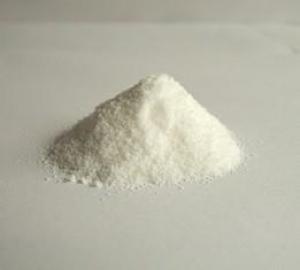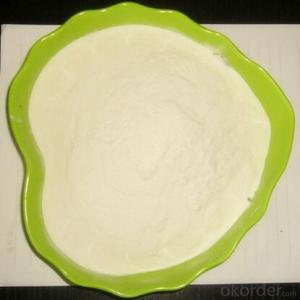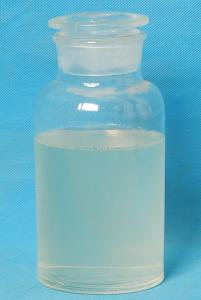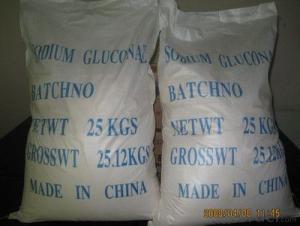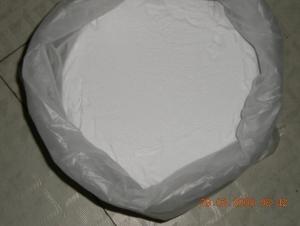Hydroxypropyl Methyl Cellulose, CAS No.: 9004-65-3
- Loading Port:
- Tianjin
- Payment Terms:
- TT OR LC
- Min Order Qty:
- 5 m.t
- Supply Capability:
- 1000 m.t/month
OKorder Service Pledge
OKorder Financial Service
You Might Also Like
Introduction of Hydroxypropyl Methyl Cellulose, HPMC, CAS No.: 9004-65-3
Hydroxypropyl Methyl cellulose (HPMC) is a kind of nonionic cellulose ether which uses the Natural polymer materials cellulose as its raw material and is made through a series of chemical processing.
Image of Hydroxypropyl Methyl Cellulose, HPMC, CAS No.: 9004-65-3
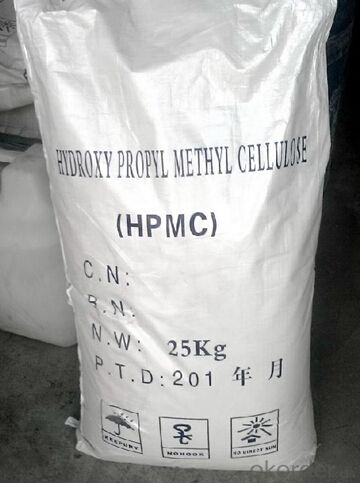
Application of Hydroxypropyl Methyl Cellulose, HPMC, CAS No.: 9004-65-3 :
HPMC is widely used in food, cosmetic and other daily use chemical lines, Typical usage as following:
A. Industry grade
Used as construction material such as plaster, renders, mortars, tile adhesives, fillers, emulsion paints. Or used for PVC polymerization;
B. Medical drug
The product is a medical accessory material of may uses. It can be used for densifiers, dispersing reagent, emulsifying reagent, Lubricator and former etc, It's used as an adhesive and coating film in tablets, increasing markedly rate of dissolution and release, and strengthen water proof for tablets and also be used as mixed dispersing reagent, eye drop reagent, controlled released matrix tablets, It is combined with other synthetic polymers and gel-type drug products to prevent ethanol separated from transparent gel drug while improve water keep ability.
C. Foodstuff
HPMC can be directly used to food as effective emulsification reagent, adhesive, thickening reagent as well as can be used as packing materials.
D. Cosmetic
According to properties of HPMC, it can be used as thickening agent, emulsification reagent, suspending reagent, stabilizing reagent, water retention reagent, rheological behavior reagent, Thus be used in all kinds of cosmetic products.
Specification of Hydroxypropyl Methyl Cellulose, HPMC, CAS No.: 9004-65-3
| Item | Specification |
| CAS NO. | 9004-65-3 |
| Appearance | white or light yellow powder |
| Moisture Content | ≤5.0% |
| PH | 4.0-8.0 |
| Particle Size | min. 98% pass through 100 mesh |
| Viscosity | 5000ps-200000cps, 2% solution |
- Q: i went on the web site of microlon an it say this stuff last a life time no need to keep adding only once an your engine is protected for life is this stuff for real an it cost 99.99 for a 32 once can witch treat an 4,6,8 cylinder engine
- Most people don't seem to know that modern engine oil has many oil additives already: (1) friction modifier (2) viscosity stabilizer (3) anti - foam (4) etc. And if you are not careful, the factory additive will negatively react with your after market additive. Some of these additive were important long time ago, but now modern oils is are complex cocktail of petroleum products. In general it is more important to get frequent and timely oil change than to use these additives. There are 4 most important maintenance items in your engine (1) engine oil (3k - 5K miles) (2) tranny oil (30K miles) (3) coolant (3 years) (4) timing belt (60K miles) Just keep those maintenance and your engine and tranny will be problem free. I have a 94 Civic with 187K miles and the engine + tranny + suspension runs like new. I get 41 MPG (doing 72 MPH). I can get even better MPG doing 55. Good maintenance pays off. good Luck.
- Q: i need to know the uses of food additives becase i have to do the research for bio >
- Food additives have been used by mankind for centuries. Salt, sugar and vinegar were among the first and used to preserve foods. In the past 30 years, however, with the advent of processed foods, there has been a massive explosion in the chemical adulteration of foods with additives. Considerable controversy has been associated with the potential threats and possible benefits of food additives. Most food additives are cosidered safe. However, some are known to be carcinogenic or toxic. Hyperactivity in children, allergies, asthma, and migraines are often associated with adverse reations to food additives. Since 1987 Australia has had an approved system of labelling for additives in packaged foods. Each food additive has to be named or numbered. The numbers are the same as in Europe, but without the prefix 'E
- Q: What ingredients are added to the bread
- An emulsifier is a substance that dissolves immiscible two phases, such as oil and water, to form a homogeneous dispersion or emulsion. In the process of the surface, the hydrophilic part of the emulsifier and the lipophilic part are bound to the wheat protein and the wheat protein in the dough, respectively, and the separated protein molecules are connected to each other to form a gluten protein complex, Solid fine gluten network structure, enhanced dough holding capacity, increased bread volume, so that the bread is more soft inside, the structure is more uniform and delicate. In addition, the emulsifier can adjust the water absorption and swelling of starch, adjust the gelatinization viscosity. Under certain pH conditions, the emulsifier can reduce the maximum viscosity of the starch paste. So that you can use the emulsifier to modify the starch to flexibly adjust the quality of flour. Common emulsifiers are mainly glyceryl monostearate (CMS), fatty acid sucrose ester (SE), sodium stearoyl lactide (SSL) and calcium stearate (CSL). Larger additions can also result in a significant increase in production costs, making it difficult for manufacturers to accept. Therefore, there are many companies will be two or more than the use of emulsifiers, which play a lower use, improve product quality synergies.
- Q: How much is the amount of sodium nitrite food additive?
- National standard "GB 2760-2007 hygienic standard for the use of food additives" on the provisions of nitrite: sodium nitrite, potassium nitrite food classification of food name / classification maximum use of g / kg
- Q: Hi, about those engine additive claim will clean the injectors and stuff, why is it better or necessary to use it when the tank is full? can i use it when it‘s half-full?? thanks!!
- I use Marvel Mystery also. It seems to work. After all, two of my fathers suburbans passed 350,000 miles, no body left thats why he got rid of them. And one Buick Electra 225(1973 with 455) had just under 500,000 when he got rid of it, again no body. Maintenance is the best policy. Every 2000-2500 miles those oil changes happened. I have taken the same approach as my dad, I use a quart of Marvel in the oil and half quart per fill up in gas. My wife and I have a 1996 S-10 bought new and now has 230,000, runs perfect, a 2000 S-10 Blazer with not enough miles to count at 77,000 and a 2001 Cavalier 2.4L with 140,000 HARD miles and runs like new. I had fuel indication problems in the blazer and cav once. I put half a quart of Jet-A with prist in each car, after about 3 days the fuel indications started working again. The cavs was 4 years ago and the Blazer was 1.5 yeas ago.
- Q: statistics question: an auto parts company advertises that its special oil additive will make the engine run smoother, cleaner, longer, with fewer repairs. an independent laboratory decides to test part of this claim. it arranges to use a taxicab company‘s fleet of cars. the cars are randomly divided into 2 groups. the companys mechanics will use the additive in one group of cars but not in the other. at the end of a year the laboratory will compare the percentage of cars in each group that required engine repairs.a) what kind of a study is this?b) will they do a one- tailed or a two-tailed test?c) if the cabs with the additive do indeed run significantly better, can the company conclude it is an effect of the additive? can they generalize this result and recommend the additive for all cars? explain
- ro a) what kind of a study is this? 2-Proportion Z-Test b) will they do a one- tailed or a two-tailed test? This is a 1-tailed test since the researchers are expecting the additive to produce a lower percentage of repairs. p2 p1 If it was a 2-tailed test, the researchers would only want to see that the percentage of repairs between the two samples are different, but not necessarily higher or lower. p2 ≠ p1 c) if the cabs with the additive do indeed run significantly better, can the company conclude it is an effect of the additive? There is always a possibility of confounding influences. For example, it does not say that this is a double-blind test where neither the taxi drivers or the researchers are unaware which cars have the additives. It will be in the researchers advantage if they can influence the results because it will benefit them financially. can they generalize this result and recommend the additive for all cars? explain Not really, since not all cars are put through the amount of driving a taxicab goes through. For example, a grandma who only drives to church on Sunday would not likely see any benefit. Hope that helps
- Q: I really just want to make my motor last longer, and better MPGWill STABIL help me? or waste of money?Ofcourse i will be using them around every 6 months.
- Stabil won't help you. Your money will be better spent if you use Chevron or Texaco gas, at least, once in a while.
- Q: What is the chemical composition of the admixture of cast aluminum, the refining agent (slag, degassing) and so on?
- Aluminum alloy cover and scouring, so that the metal liquid and furnace gas isolation, to prevent oxidation, evaporation, suction. Remove the metal liquid impurities, with the role of thermal desulfurization. Refining principle reaction is as follows: the use of the main components NaNO3, graphite The reaction is as follows: NaNO3 + C → NaCO3 + N2 ↑ + CO2 ↑ 380 (2) The reaction is carried out under the following conditions: NaNO3 + C → NaCO3 + N2 ↑ + CO2 ↑ 380 ℃, NaNO3 → Na2O + NO ↑ after the reaction of N2, NO, CO2 gas on the human body and the environment are no corrosion stimulating effect, the refining effect is also good, refining temperature of 690-720 ℃, refining time is 5-12min rest time 5-8 min.
- Q: I always wonder because not as many people had problems with weight, say like 30 years ago. I understand in times past people didn't have things so easy as we do today, but they weren't all exercise freaks either. Something has to be causing this. And if this is a cause, what can we do to avoid this?
- Fast Foods, frozen prepared foods, processed foods etc. all add to the weight and health problems. Just don't buy them and consume them on a regular basis.Thirty years ago much of it was available but we didn't buy it as a regular staple. It was a treat so to speak. People should eat more home grown food and make dinner from scratch. i don't see it changing too much in the near future. it is easier to drive up to McDonald's then to stop and get out of the car, find your way thru the supermarket, wait in line etc etc. Sounds like you know good from bad. Just don't go with the flow.
- Q: What are the benefits of food additives?
- Suggestions to search
Send your message to us
Hydroxypropyl Methyl Cellulose, CAS No.: 9004-65-3
- Loading Port:
- Tianjin
- Payment Terms:
- TT OR LC
- Min Order Qty:
- 5 m.t
- Supply Capability:
- 1000 m.t/month
OKorder Service Pledge
OKorder Financial Service
Similar products
Hot products
Hot Searches
Related keywords
